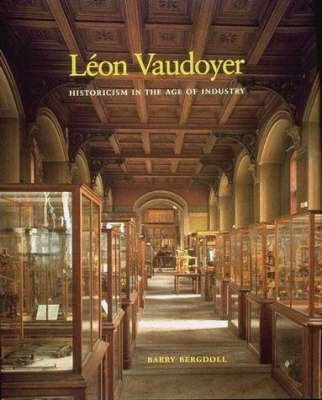Architectural History Foundation Book
1 total work
Leon Vaudoyer (1803-1872) was, with Felix Duban, Henri Labrouste and Louis Duc, one of the "romantic" beaux-arts architects who challenged both the authority and the philosophy of the French Academy in the years around 1830. The group's insistence on the relevance of French Medieval and Renaissance architecture to contemporary design has earned them a reputation as prophets of the historicist point of view that has come to be a fundamental theme of progressive ideologies of design well into the 20th-century. This study of the youngest member of the group provides a new interpretation of historicism in 19th century French architecture. It addresses the relationship of historicist architecture to the political and cultural forces that shaped the urbanization and industrialization of the French landscape, demonstrating that architecture is not simply a reflection of such forces, but an aspect, even an instrument of them.
"Leon Vaudoyer" documents Vaudoyer's career and his major commissions, both his well-known works and several previously unknown designs - among them the Monument to General Foy in the Pere Lachaise Cemetery, the Conservatoire des Arts et Metiers in Parts, the lavishly polychromatic Cathedral at Marseille - along with unrealized projects for a new city hall in Avignon and a reconstruction of the Sorbonne. This study also encompasses the career of Vaudoyer's father A. L. T. Vaudoyer, who was a key figure in the reformulation of the institutions and doctrines of academic architecture during the Revolution, Empire, and Bourbon Restoration. It explores the institutional settings of Vaudoyer's training and practice; the political strategies of his mentors, patrons, and clients; the constituencies that influenced the design, siting, and reception of each of his commissions; and the social and political programmes of the institutions for which he designed.
"Leon Vaudoyer" documents Vaudoyer's career and his major commissions, both his well-known works and several previously unknown designs - among them the Monument to General Foy in the Pere Lachaise Cemetery, the Conservatoire des Arts et Metiers in Parts, the lavishly polychromatic Cathedral at Marseille - along with unrealized projects for a new city hall in Avignon and a reconstruction of the Sorbonne. This study also encompasses the career of Vaudoyer's father A. L. T. Vaudoyer, who was a key figure in the reformulation of the institutions and doctrines of academic architecture during the Revolution, Empire, and Bourbon Restoration. It explores the institutional settings of Vaudoyer's training and practice; the political strategies of his mentors, patrons, and clients; the constituencies that influenced the design, siting, and reception of each of his commissions; and the social and political programmes of the institutions for which he designed.
